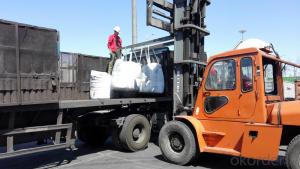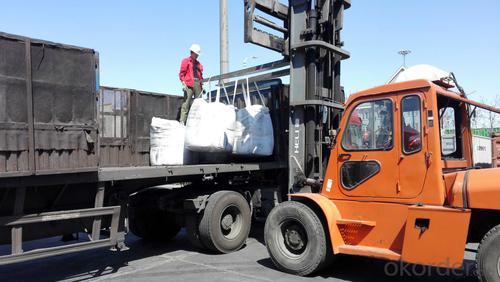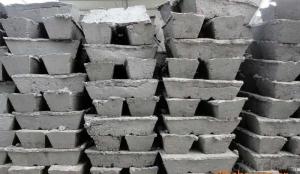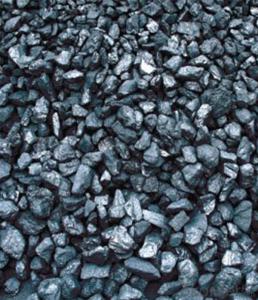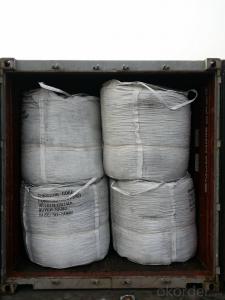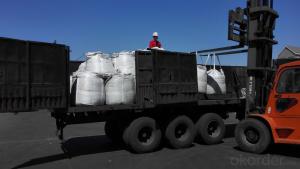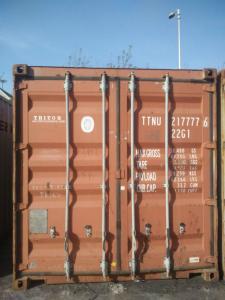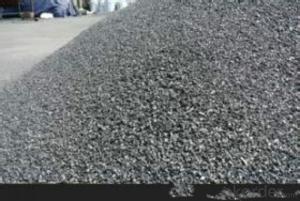VM1% carbon additive with fixed caron 95% for steel making
- Loading Port:
- Shanghai
- Payment Terms:
- TT OR LC
- Min Order Qty:
- 20.4
- Supply Capability:
- 1004 m.t./month
OKorder Service Pledge
OKorder Financial Service
You Might Also Like
Introduction:
Calcined anthracite can be called carbon additive, carbon raiser, recarburizer, injection coke, charging coke, gas calcined anthracite. We would really like to recommmend you to use our products
Best quality Anthracite as raw materials through high temperature calcined at over 2000℃ by the DC electric calciner with results in eliminating the moisture and volatile matter from Anthracite efficiently, improving the density and the electric conductivity and strengthening the mechanical strength and anti-oxidation. It has good characteristics with low ash, low resistivity, low sulphur, high carbon and high density. It is the best material for high quality carbon products. It is used as carbon additive in steel industry or fuel.
Features:
G-High Calcined Anthracite is produced when Anthracite is calcined under the temperature of 1240°C in vertical shaft furnaces. G-High Calcined Anthracite is mainly used in electric steel ovens, water filtering, rust removal in shipbuilding and production of carbon material.
Specifications:
F.C.% | 95MIN | 94MIN | 93MIN | 92MIN | 90MIN | 85MIN | 84MIN |
ASH % | 4MAX | 5MAX | 6 MAX | 6.5MAX | 8.5MAX | 12MAX | 13MAX |
V.M.% | 1 MAX | 1MAX | 1.0MAX | 1.5MAX | 1.5MAX | 3 MAX | 3 MAX |
SULFUR % | 0.3MAX | 0.3MAX | 0.3MAX | 0.35MAX | 0.35MAX | 0.5MAX | 0.5MAX |
MOISTURE % | 0.5MAX | 0.5MAX | 0.5MAX | 0.5MAX | 0.5MAX | 1MAX | 1MAX |
Pictures
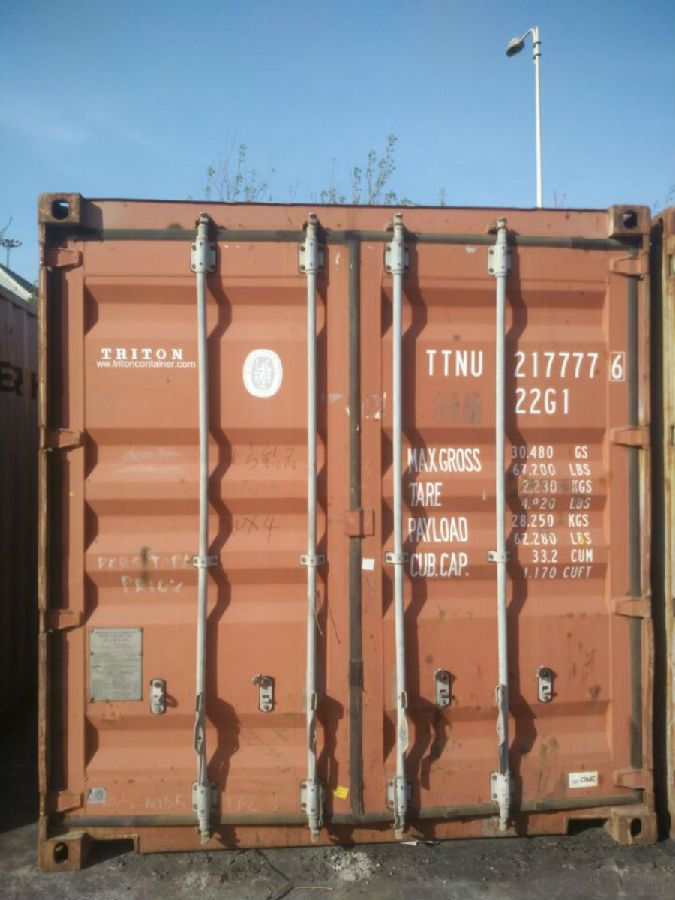
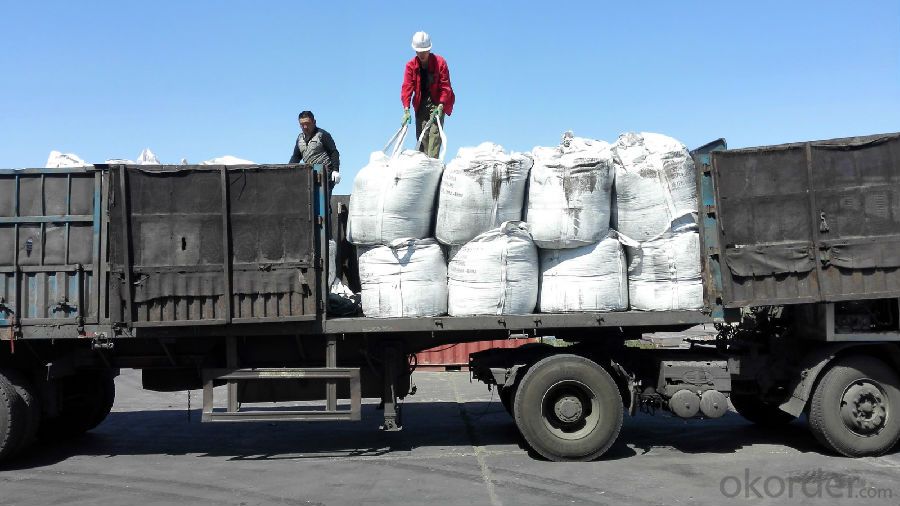
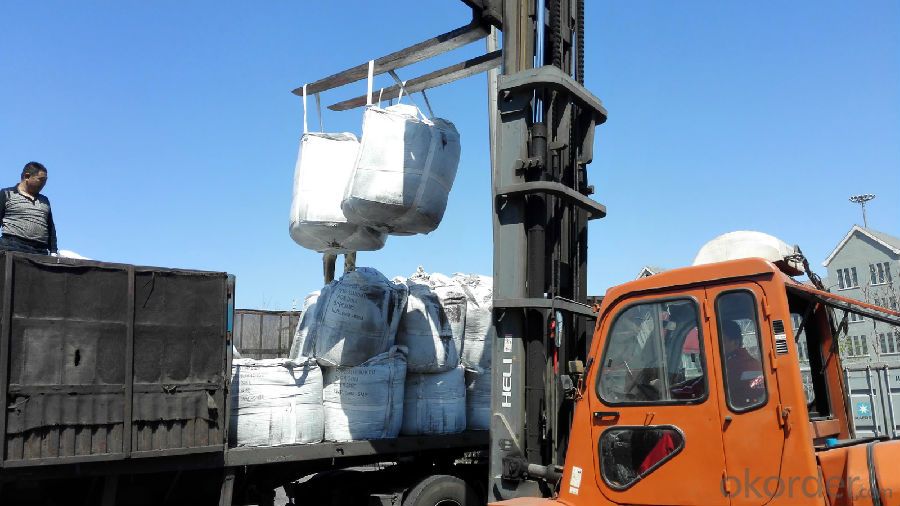
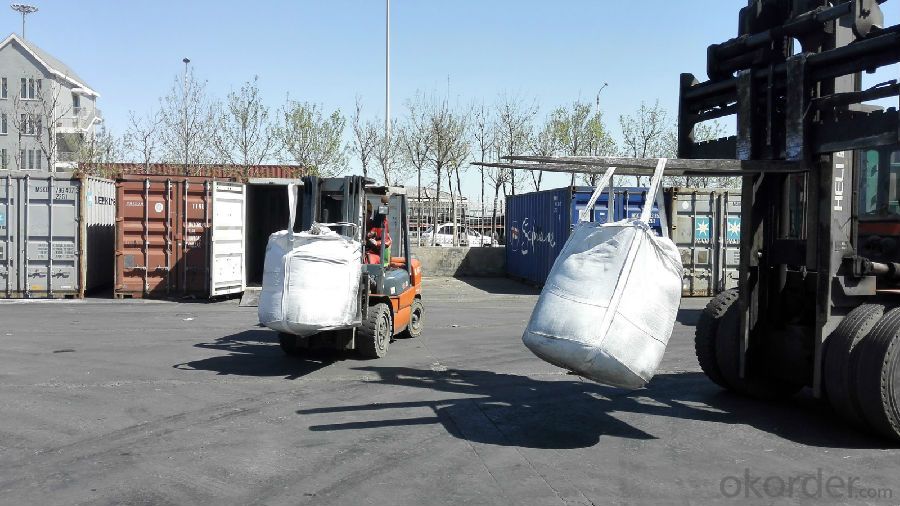
FAQ:
Packing:
(1). Waterproof jumbo bags: 800kgs~1100kgs/ bag according to different grain sizes;
(2). Waterproof PP woven bags / Paper bags: 5kg / 7.5kg / 12.5kg / 20kg / 25kg / 30kg / 50kg small bags;
(3). Small bags into jumbo bags: waterproof PP woven bags / paper bags in 800kg ~1100kg jumbo bags.
Payment terms
20% down payment and 80% against copy of B/L.
Workable LC at sight,
- Q: Benefits of reducing carbon emissions
- The researchers then extracted 4 ice ages from 500 to 140 thousand years from Greenland, which resulted in the discovery of TOMV virus in the ice. Researchers say the surface of the virus is surrounded by solid proteins, so it can survive in adversity.The new findings that researchers believe that a series of influenza, polio and smallpox epidemic virus may be hidden in the depths of the ice, the human of the original virus had no ability to resist, when global temperatures rise to ice melting, the ice buried virus in the thousand or more may be raised, forming the epidemic. The scientists said, although they do not know the survival of the virus of hope, or the opportunity to re adapt to the ground environment, but the possibility certainly can not deny the virus back.
- Q: What are the industrial uses of diamonds?
- Diamonds have various industrial uses due to their exceptional hardness and thermal conductivity. They are commonly used as abrasives in cutting, grinding, and polishing tools for materials like glass, ceramics, and metals. Additionally, diamonds are utilized in the production of high-quality drill bits for drilling wells and mining operations. Their thermal conductivity makes them valuable in heat sink applications, such as in the manufacturing of computer chips and laser technology. Diamonds are also employed in the production of specialized lenses and windows for high-pressure research and industrial lasers.
- Q: What is carbon black ink?
- The main component of carbon black ink is carbon black pigment. Carbon black, a fine powder produced from carbon through incomplete combustion of hydrocarbons, is commonly used as a pigment in the ink industry due to its intense black color, excellent opacity, and resistance to UV rays. When it comes to applications, carbon black ink is widely utilized in printing, writing, and drawing. It can be found in ballpoint pens, fountain pens, markers, and printer inks. The ink's high concentration of carbon black pigment ensures a deep and solid black color on different surfaces, including paper. One of the advantages of carbon black ink is its durability. It has exceptional lightfastness, meaning it does not fade or change color when exposed to light over time. This is particularly crucial for applications that require long-lasting or archival-quality ink, such as art or document preservation. Moreover, carbon black ink exhibits good water resistance and adhesion properties, making it suitable for use on various materials like paper, cardboard, and plastics. Its high viscosity ensures consistent and smooth ink flow, allowing for precise and consistent writing or printing. In conclusion, carbon black ink is a versatile and reliable ink that offers an intense black color, excellent durability, and good adhesion properties. Its widespread use in various writing and printing applications showcases its quality and dependability.
- Q: There are ten carbon and oil Gulu chorus, carbon English Gollum and finally he said to sing, this is English this is the song of English is what?
- You don't know, because oil Gollum and formal cooperation should be only the first, the other tracks are the max of others
- Q: What are the properties of carbon-based textiles?
- Carbon-based textiles have a number of unique properties that make them advantageous in various applications. Firstly, carbon-based textiles exhibit exceptional strength and durability. They are known for their high tensile strength, making them resistant to stretching and tearing. This property allows carbon textiles to withstand harsh conditions and maintain their integrity over time. Secondly, carbon-based textiles possess excellent thermal conductivity. They can efficiently conduct heat, making them suitable for applications that require effective heat management. This property is particularly useful in industries such as aerospace, automotive, and electronics, where heat dissipation is essential to prevent system failures. Furthermore, carbon textiles are highly resistant to chemical corrosion. They can withstand exposure to various chemicals, acids, and solvents without losing their structural integrity. This property makes carbon-based textiles ideal for applications in the chemical industry, where exposure to corrosive substances is common. Another notable property of carbon textiles is their inherent flame resistance. They have a high resistance to ignition and do not propagate flames easily. This characteristic makes them suitable for use in environments where fire safety is crucial, such as in protective clothing for firefighters and military personnel. Carbon-based textiles also exhibit good electrical conductivity, making them suitable for applications in electronics and electrical engineering. They can effectively conduct electricity and dissipate static charges, reducing the risk of electrical malfunctions or damage. Lastly, carbon textiles have a low coefficient of thermal expansion, meaning they do not expand or contract significantly with changes in temperature. This property makes them dimensionally stable, ensuring that they maintain their shape and size under varying thermal conditions. In summary, carbon-based textiles possess a combination of strength, durability, thermal conductivity, chemical resistance, flame resistance, electrical conductivity, and dimensional stability. These properties make them highly versatile and suitable for a wide range of applications in various industries.
- Q: Advantages of carbon fiber
- The specific strength and specific modulus of the composite formed with resin are about 3 times higher than that of steel and aluminum alloy. Carbon fiber composites can be used in space, missile and sports equipment to reduce weight, improve payload and improve performance. They are important structural materials in aerospace industry.
- Q: Is aluminum alloy expensive or high carbon steel expensive?
- Here is a concept to be worked out:High carbon steel is more carbon in iron. The strength is better than general iron.Aluminum alloy is not pure aluminum, if it is pure aluminum frame, it can not be used as frame, aluminum alloy frame generally after T6 (T4), the intensity is absolutely guaranteed.Now the material is generally so divided:The iron - Aluminum Alloy frame - magnesium alloy - titanium alloy, carbon fiberThe top is divided into grades.
- Q: What is the composition of carbon in stainless steel?
- Adjust the hardness, general carbon content, the higher the relative hardness is relatively hard. But no, the higher the better, the carbon content needs to be well controlled. For example, if the welding position is too high carbon, it will lead to brittle weld and easy to crack.
- Q: Search for a summary of the importance of carbon in life. If you write well, you can add points,
- Carbon is a nonmetallic element, whether it is carbon of single substance or carbon compound. It plays an indispensable role in material production, daily life and human existenceThe material containing carbon elemental state are mainly coal, charcoal, graphite and diamond; coal, charcoal is agent or reducing domestic and industrial fuel, raw materials, graphite pencil electrode materials and high temperature resistant materials, diamond is expensive jewelry materials and industrial superhard materials.
- Q: What does carbon cloth tonnage mean?
- Carbon cloth tonnage is illegal: mean a square centimeter of sectional area of carbon cloth tension of tonnage. Meaning that the carbon cloth rolled into a solid "rod" if the cross-sectional area of the bar is 1 cm, the maximum tension tonnage it bear -- carbon cloth tonnage.
Send your message to us
VM1% carbon additive with fixed caron 95% for steel making
- Loading Port:
- Shanghai
- Payment Terms:
- TT OR LC
- Min Order Qty:
- 20.4
- Supply Capability:
- 1004 m.t./month
OKorder Service Pledge
OKorder Financial Service
Similar products
Hot products
Hot Searches
